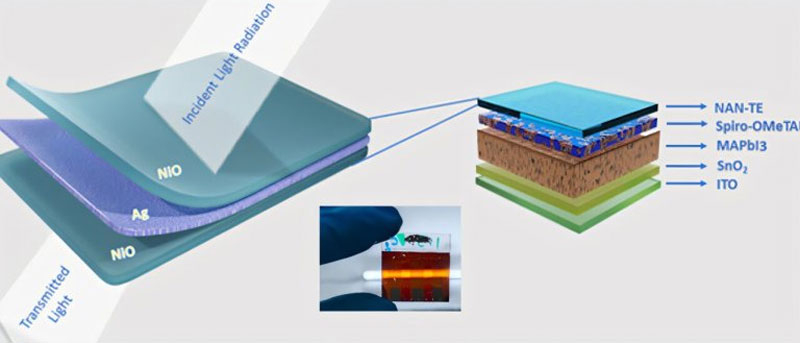In the vast majority of cases, the back side of solar panels cannot boast of decent illumination so that the light works equally well on both sides of the battery. This is also hampered by the lack of electrodes with good transparency so that the rays pass through the panels with little loss. Therefore, today, scientists have the task of creating transparent electrodes with the highest efficiency in the first place, and it is close to being solved.

Image source: IIT
A team of researchers from the Indian Institute of Technology (IIT) in Dharwad claims to have found a strong, stable, efficient and affordable transparent material for solar panel electrodes. The new material could replace expensive and brittle materials such as indium tin oxide (ITO), which are currently used to make bifacial solar panels.
Indian scientists have developed a technology for depositing transparent thin-film electrodes from three alternating layers: two outer layers of nickel oxide (NiO) and silver (Ag) between them. These materials do not require special processing to be strong and flexible. They will also be cheaper, which promises to make bifacial solar cells more accessible.
The breakthrough came when the researchers were able to develop regimes for layer-by-layer deposition of materials from the gas phase. During this process, materials evaporate in a vacuum chamber and then condense on the surface to form thin, uniform layers. Using this method, the scientists formed a three-layer structure of NiO/Ag/NiO (NAN), resulting in an electrode thickness of less than 40 nm.
The use of NAN electrodes in an experimental perovskite solar panel showed an efficiency of 9.05% on the front side and 6.54% on the back side (maximum efficiency of the cells was not pursued). The bifaciality coefficient, which shows how efficiently the back side of the panel generates electricity compared to its front side, reached 72%. When tested for 1000 hours, perovskite panels without any protection from the environment retained up to 80% of their original efficiency.
Such double-sided solar panels will increase the efficiency of operation under normal conditions and will be in demand in areas where photovoltaics have not been used before, for example in agriculture, where every photon of light counts. Such panels can also replace window glass, generating energy without interfering with the flow of light into the room.